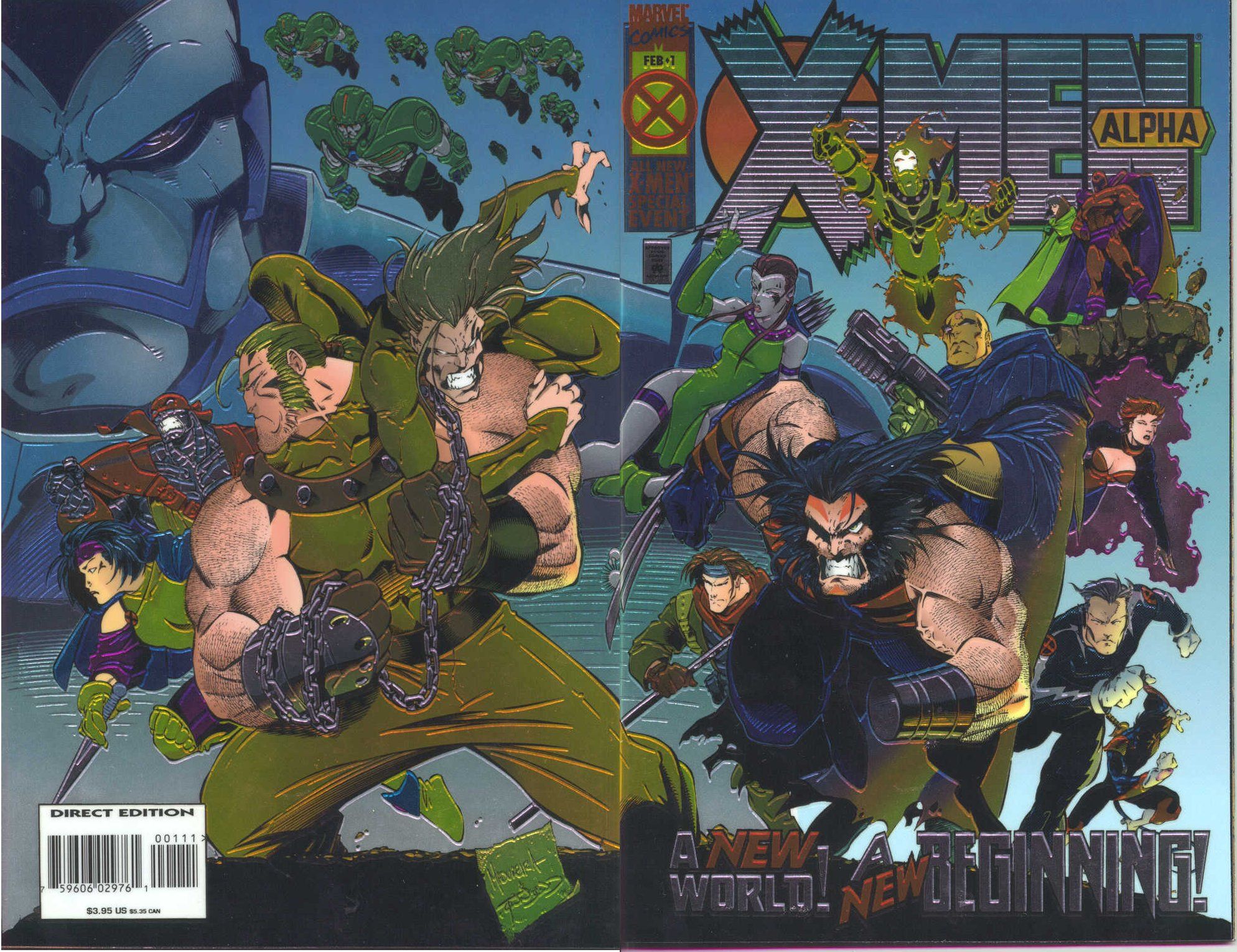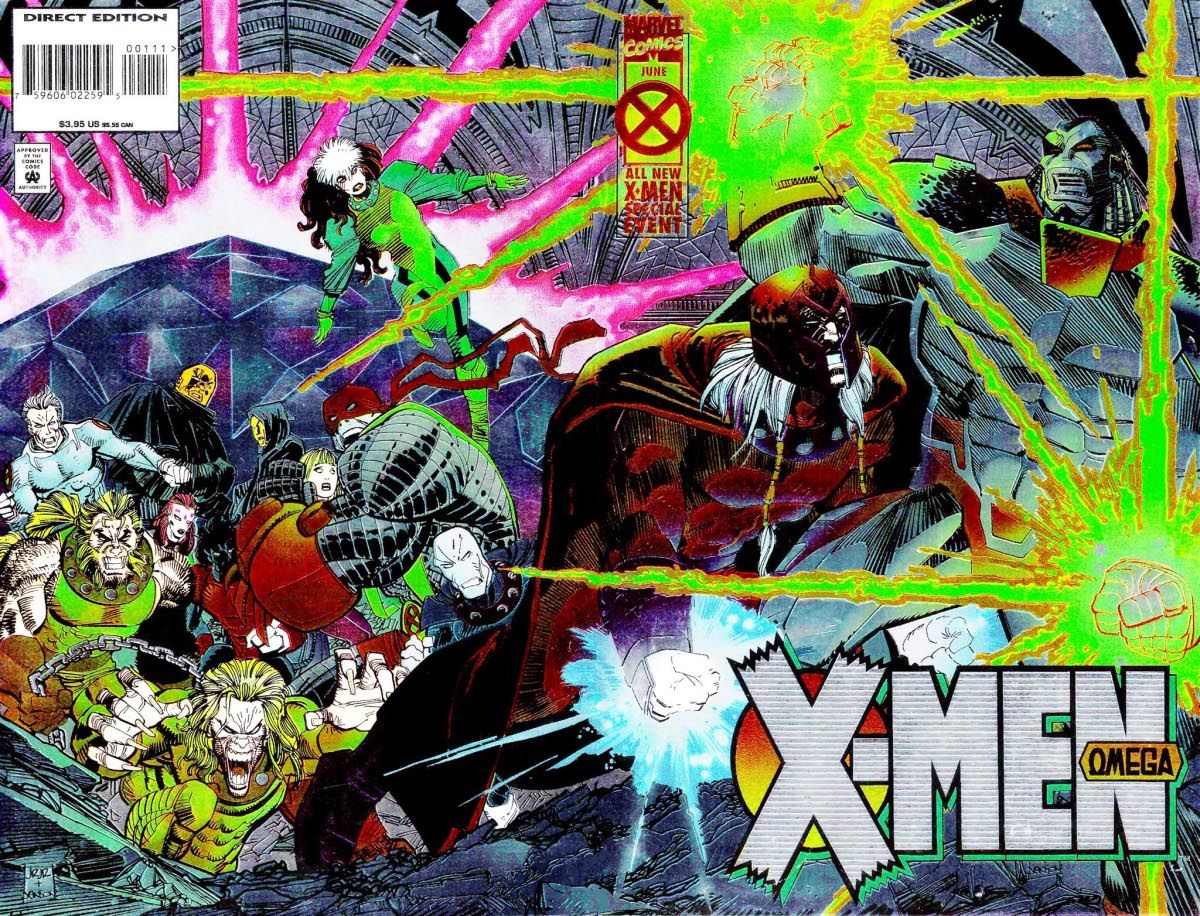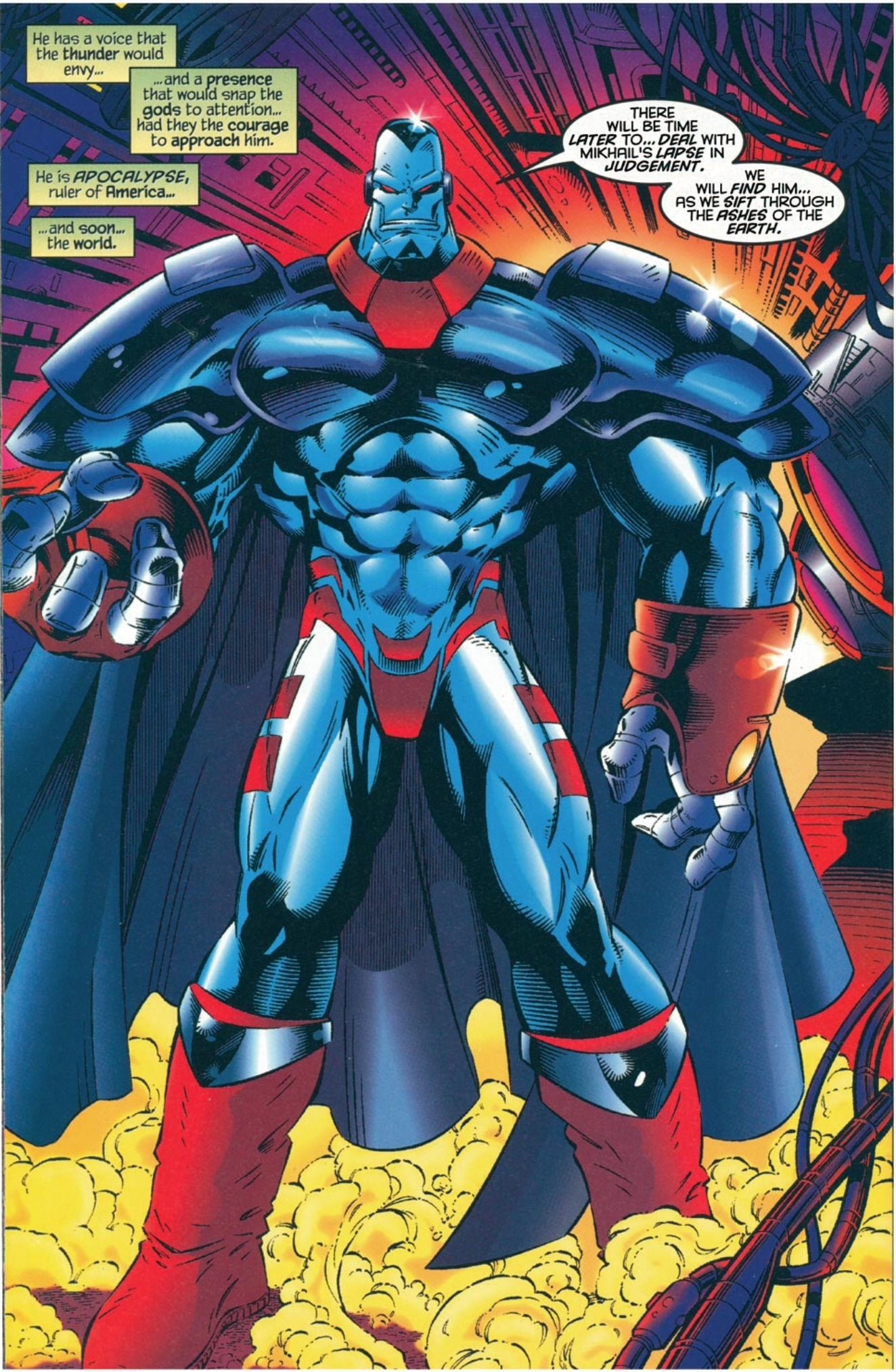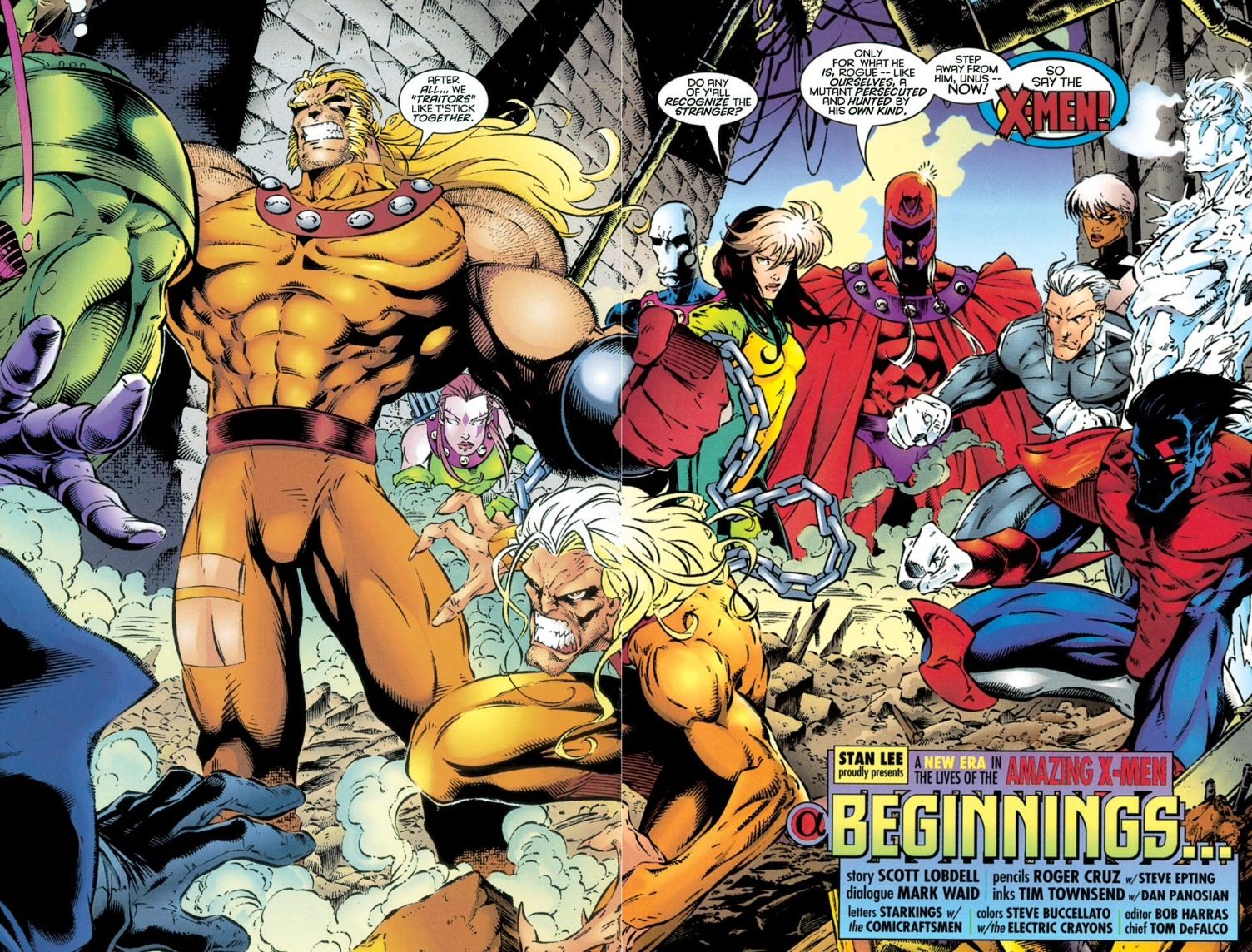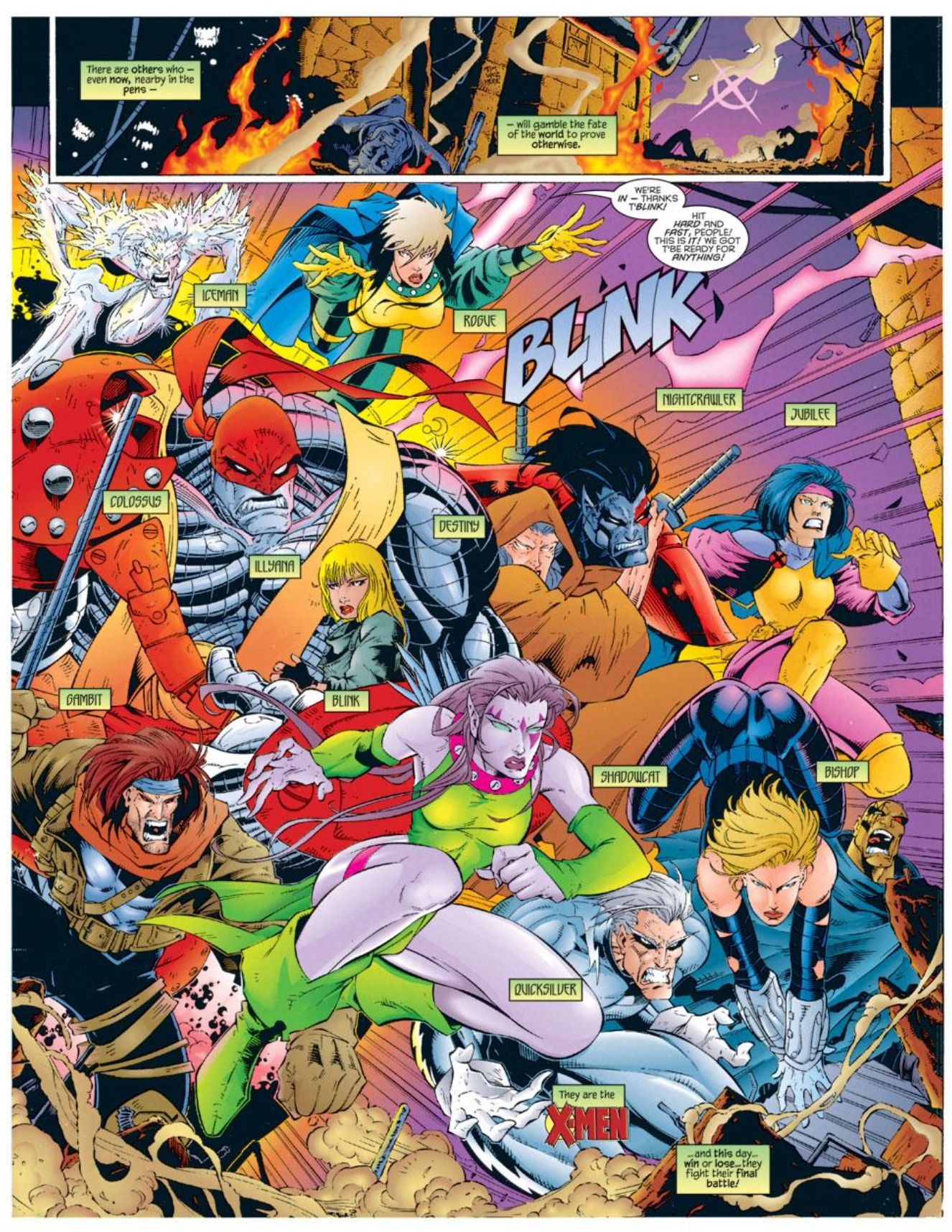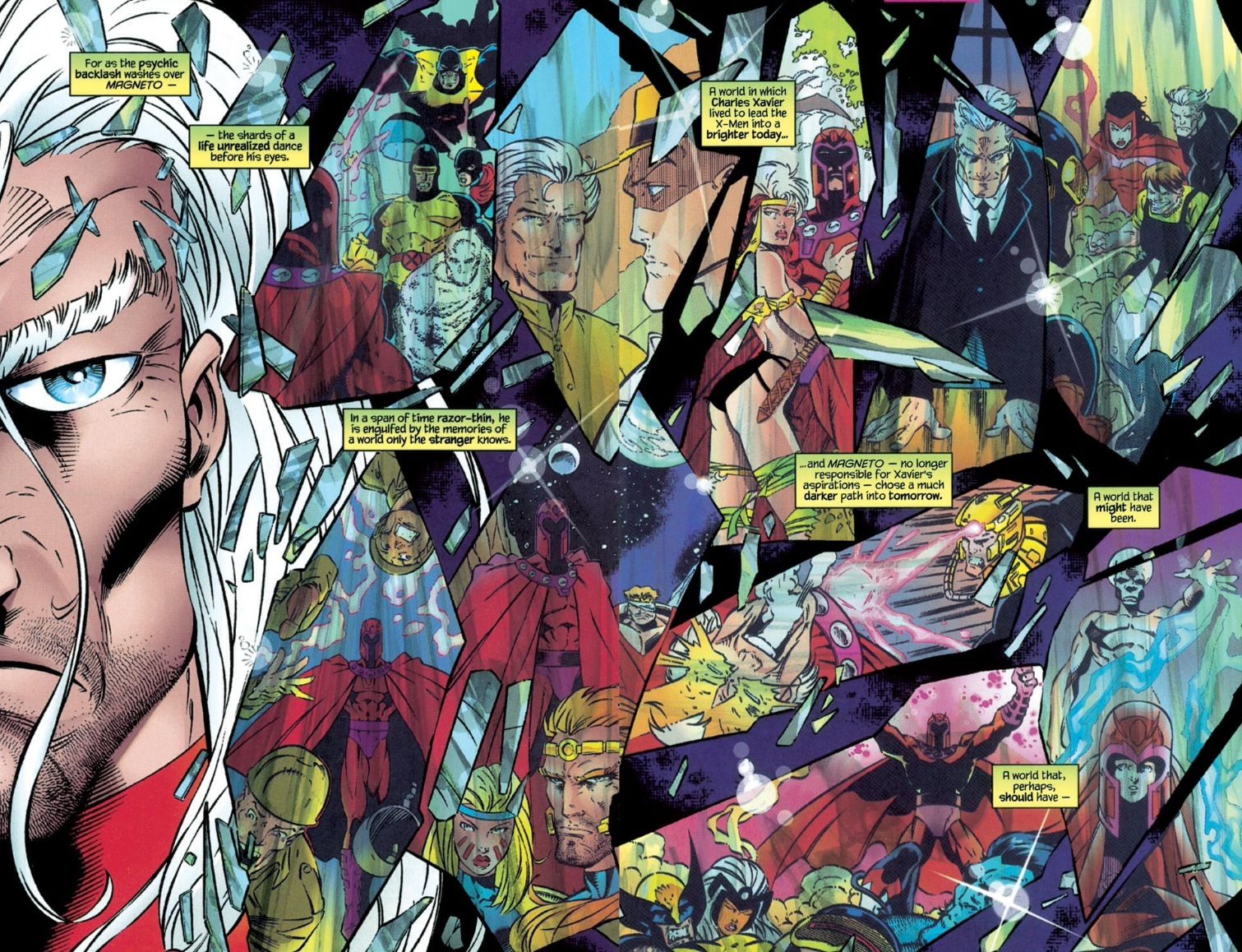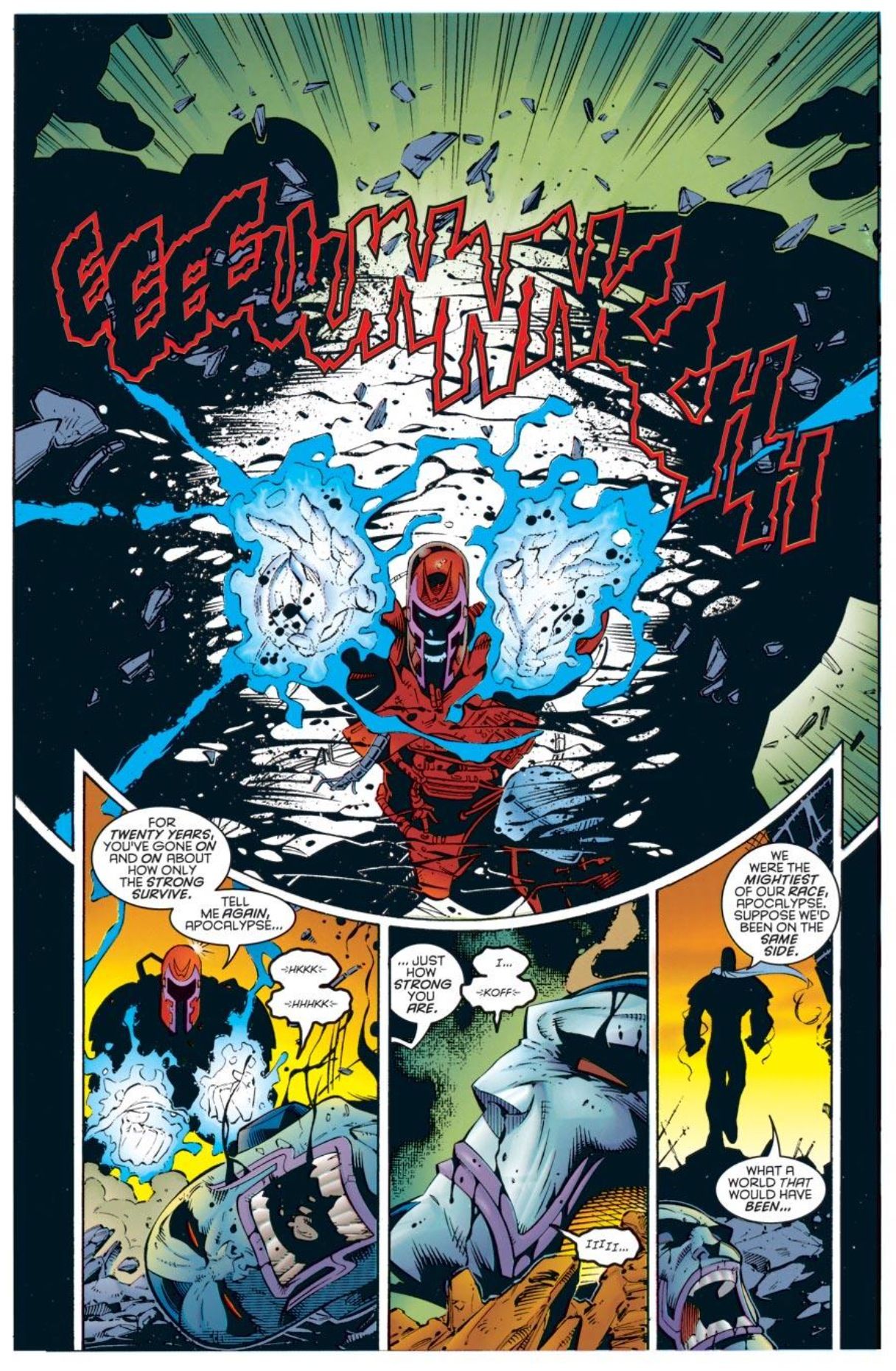In this column, Mark Ginocchio (from Chasing Amazing) takes a look at the gimmick covers from the 1990s and gives his take on whether the comic in question was just a gimmick or whether the comic within the gimmick cover was good. Hence "Gimmick or Good?" Here is an archive of all the comics featured so far. We continue with the variant cover for the first and last issues of Marvel's Age of Apocalypse crossover...
X-Men: Alpha #1 and X-Men: Omega #1 (published February 1995 and June 1995) – script by Scott Lobdell and Mark Waid (Alpha and Omega); pencils by Roger Cruz (Alpha and Omega); Alpha inks by Tim Townsend and Dan Panosian; Omega inks by Townsend, Bud LaRosa, Karl Kesel, Harry Candelario, Scott Hanna and Al Milgrom; Alpha cover by Joe Madureira and Townsend; Omega cover by John Romita Jr. and Klaus Janson
The release of the Days of Future Past film has inspired Gimmick or Good? to tackle X-Men and alternative timelines. I’ve heard rumors of some X-Men story from the 1990s that dealt with the idea of an alternative universe – do any of you know what I’m talking about?
“Age of Apocalypse” is one of the most famous comic book events of the 90s and is notable for using every single X-family series to tell the story of an alternative timeline where the evil mutant Apocalypse ruled, Charles Xavier was dead, and Magneto had taken his former adversary’s place as the head of the X-Men. Bookending the event were two one-shots, X-Men: Alpha and X-Men: Omega, which, in typical mid-90s fashion, each featured chromium embossed wraparound covers.
But what about inside the comics?
First, a disclaimer. Because “Age of Apocalypse” ran across more than 40 different individual comics in 1995-96, for the sake of brevity, all of my comments will pertain specifically to the Alpha and Omega one-shots. I understand it’s difficult to talk about something as massive as “Age of Apocalypse” without looking at the entire picture, and inevitably some things I say will relate to the event as a whole, but in the spirit of a column that looks at 90s comics with “gimmick” covers, I’m limiting my judgments to the two issues with the chromium on the front.
Years later, what’s so amazing about X-Men: Alpha is how it expertly engages the reader with this very dramatic shift in the status quo. With so many comic book series going through similar upheavals during the same timeframe, Alpha stands head and shoulder above the pack for the way it exudes confidence in its brave new concept.
Drawing clear inspiration from its time traveling predecessor, “Days of Future Past,” Alpha drops the reader into a dystopian alternative timeline without a huge amount of exposition. The net result is an incredibly unnerving and disturbing opening sequence where the reader sees a young girl running for her life only to fall into the hands of some of Apocalypse’s henchmen. Just when it looks like the girl is about to be murdered, the X-Men show up – except this is not the X-Men anyone was likely expecting when this story was first published. Instead of Professor X leading the group, it’s Magneto. And instead of it being the usual team of uncanny mutants (i.e. Cyclops, Wolverine, Storm, etc.), it’s a mish mash of heroes and villains such as Sabretooth, Nightcrawler and Quicksilver, standing side-by-side.
The way the creative team pulls the curtain away on this new band of X-Men is the first of many shocking moments in Alpha and “Age of Apocalypse.” Again, it’s easy to look back at these images now and take it all for granted. I can only imagine the number of jaws that dropped when people first read this in 1995 (sadly, I was not an X-Men reader in the 90s).
Of course, it’s one thing just to shock people, but Alpha also goes ahead and sells its new concept. All of these characters, who are now apparently aligned against Apocalypse, still maintain traces of their core characteristics. There’s a pompousness to Magneto and Sabretooth is still anxious to rip his advesaries to shreds.
We also see the flipside of this with some of the characters who were once regarded as “heroes” now working for Apocalypse. Hank McCoy’s Beast still has a passion and aptitude for science, but he’s using his knowledge to torture the opposition. Cyclops exhibits his trademark leadership, but with a twinge of melancholy and regret. These characters are recognizable, while also being very, very different.
There is also a host of new character dynamics to create intrigue in this storyline. Magneto and Rogue are together and have a child, while Gambit pines for Rogue. Wolverine and Jean Grey are a couple but operating as part of another group dubbed the Human High Council.
And just to make sure the reader isn’t totally lost, the creative team brings in Bishop as an omniscient character to announce to the audience that there’s something extraordinarily screwy about this timeline. While the next four months of X-Men comics would all operate as if this alternative timelines was the new normal, Bishop’s role in Alpha is to provide readers with the inkling hope that order will eventually be restored to the franchise.
Alpha misses some marks. Despite being giant-sized, there are sequences where the issue reads more like a checklist, skipping around from character introduction to character introduction more out of obligation to making sure everybody’s rule in the new status quo has been established. By shuffling through so many characters so quickly, the reader doesn’t get a chance to develop attachments or emotions to some of these subplots.
While Alpha sets up the new timeline, Omega does the dirty work of breaking everything down. As the final chapter to such an ambitious storyline, Omega yields some very powerful moments, but those emotional punches don’t always land as solidly as they should because it is patently obvious as the issue moves along that the original status quo will be eventually restored.
As a result, a lot of the death and destruction in this comic –via self-sacrifice and murder – can feel a little cheap and unnecessary as the issue accelerates towards the hard reset button. That’s not to say the comic is devoid of emotion. Watching Logan mourn over Jean’s fallen body saying she’s no “Phoenix” is a poignant nod to X-Men history and the final battle between Magneto and Apocalypse is quite exhilarating. Seeing Magneto walk away from the shattered Apocalypse saying “We were the mightiest of our race, Apocalypse. Supposed we’d been on the same side. What a world that would have been …” is an iconic comic book moment.
But when reading Omega nearly 20 years later, the big game-changing moments come across as something that was unearthed from a time capsule. The emotions and stakes were clearly very real at the time that this story was published, but I can’t say with confidence that everything has aged well when examining it in present day.
That’s not to take anything away from “Age of Apocalypse’s” ambition and as the two bookends of this revolutionary arc, Alpha and Omega are a critical part of a story that is universally (and rightly) considered a success and an achievement. In many ways, “Age of Apocalypse” is the quintessential storyline for this column: it is unquestionably a gimmick, but one of the most well-executed and inspired gimmicks of the 1990s.
Verdict: Good

